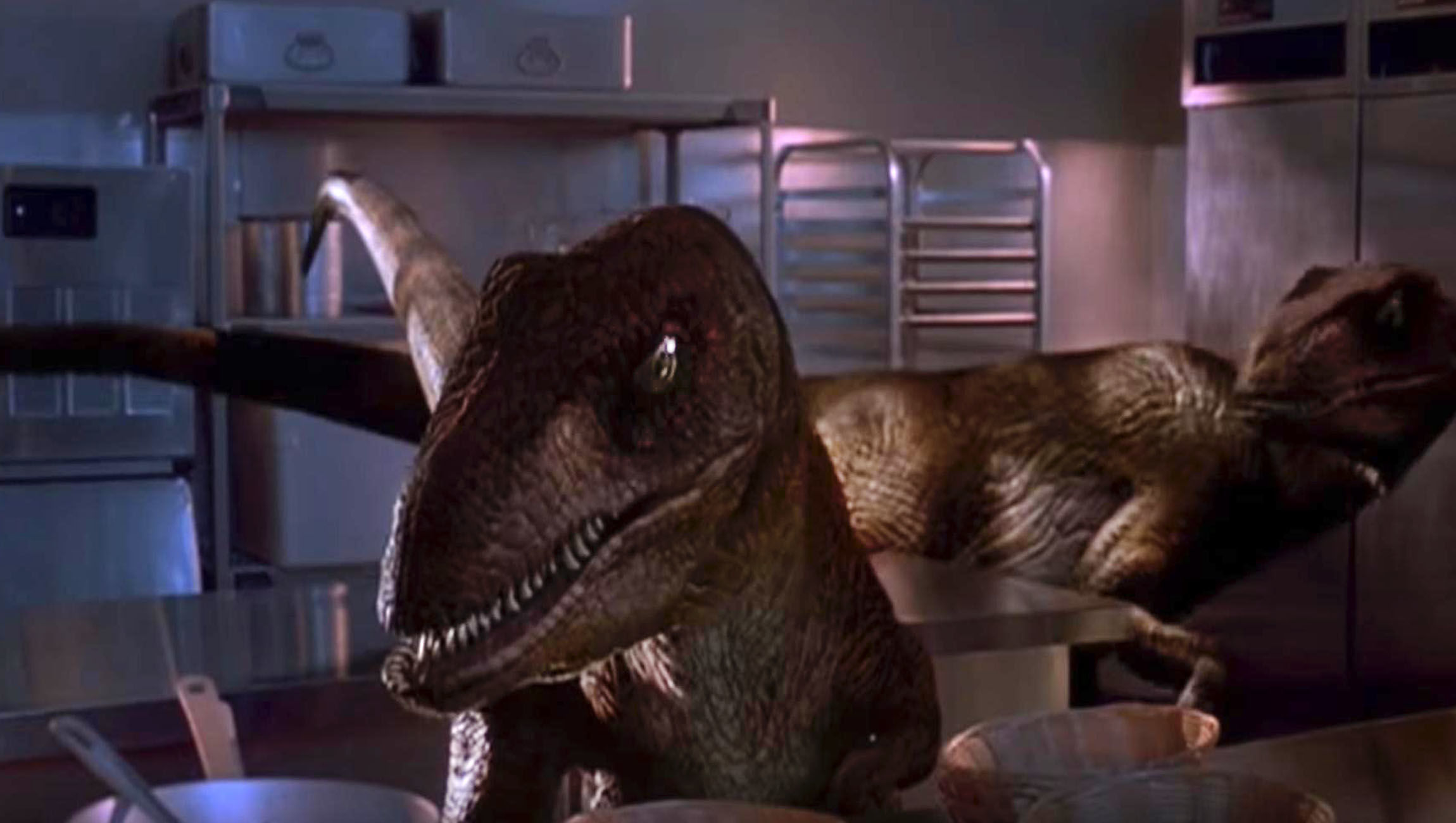Create a free profile to get unlimited access to exclusive videos, sweepstakes, and more!
Wrong answer, Jurassic Park—raptors didn’t gang up on prey, but went it alone

Remember that epic scene in Jurassic Park where a pack of raptors attacked the T. Rex and (just by coincidence) saved the lives of the humans trapped in the museum? Turns out that probably wouldn’t have happened even if we could bring dinosaurs back from extinction.
Velociraptors were solitary hunters. Joseph Frederickson, a vertebrate paleontologist at the University of Wisconsin Oshkosh, and his team found that out after they put fossilized raptor teeth under the microscope. What they unearthed was unexpected after raptors had reached cinematic stardom snapping their jaws and ripping apart prey in packs. Frederickson’s team instead studied what these apex predators ate throughout their lives, and that gave away something quite surprising—and gruesome.
“[The velociraptor] was more analogous to agonistic reptilian carnivores, like the Komodo dragon,” Frederickson said in a study recently published in Palaeogeography, Palaeoclimatology, Palaeoecology. “Among the many differences between these two analogs is how social and asocial organisms rear their young, producing a diagnostic pattern based on the presence or absence of ontogenetic dietary changes."
You can’t exactly observe an animal in action when it’s been extinct for 66 million years. Behavior like pack hunting can’t exactly be observed in fossilized evidence, either, unless we someday find an entire pack of dinosaur skeletons trapped in lava mid-hunt after that fateful asteroid stuck. What the researchers did instead was compare raptors to their closest living relatives, especially the Komodo dragon. This giant lizard with lethal saliva is also a cannibal. Adult Komodos have no problem snapping up babies (not their own) for dinner, so the juveniles get back at them by climbing trees and eating whatever is available up there instead of risking it on land.
Frederickson figured that if he could find out the dietary pattern of young raptors and compare that to older ones, it could reveal whether they preferred ganging up on a potential meal or hunting solo. They studied isotopes of carbon and oxygen in the teeth from the Cretaceous raptor Deionychus. The isotopes, or versions of these elements with the same amount of protons but a different amount of neutrons in the nucleus, gave them insight into the raptors’ sources of food and water. These were compared to the oxygen and carbon isotopes in the fossilized teeth of an herbivorous dinosaur and an extinct crocodilian from the same site where the raptor fossils were found.
Apparently, the ancestors of crocodiles also seemed to go the Komodo dragon way until they were large enough to hold their own. Both their teeth and the raptor teeth showed similarities in how they ate as they transitioned from juveniles to adults. The juvenile teeth had different amounts of carbon than the adult teeth, meaning that they were eating different foods while going through growing pains and escaping predators of their own kind. What an animal eats ends up becoming part of its body. Carbon isotopes from ancient plants can tell scientists where these plants grew, from location to environment. Analyzing stable isotopes (which never decay) of carbon in the younger raptor and crocodile teeth proved that they indeed ate plants, which meant that they were climbing trees in the area to stay alive.
“This is what we would expect for an animal where the parents do not provide food for their young,” Frederickson said in a press release. “We also see the same pattern in the raptors, where the smallest teeth and the large teeth do not have the same average carbon isotope values, indicating they were eating different foods. This means the young were not being fed by the adults, which is why we believe Jurassic Park was wrong about raptor behavior.”
Jurassic Park is guilty of another error. Raptors don’t hunt prey larger than themselves. So however awesome it was to see them tearing at T-Rex with those dagger teeth, they would have never had an appetite that huge.
(via University of Wisconsin Oshkosh/Palaeogeography, Palaeoclimatology, Palaeoecology)



























